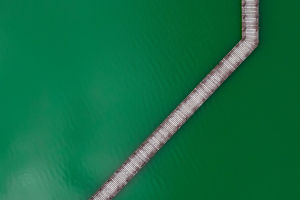When it comes to the visual landscape of Europe, one cannot help but notice the colorful houses that adorn the streets.
From vibrant reds to soft pastels, European homes have long been a source of inspiration for artists, architects, and homeowners alike. But have you ever stopped to wonder why these houses are so brightly colored, and what makes them stand out from other regions of the world? In this article, we will delve into the history and cultural significance behind the colorful houses of Europe.
One of the main reasons why houses in Europe are so colorful is due to the region's long and varied history. From the medieval period to the present day, Europe has been home to countless different cultures and architectural styles, each with its own unique color schemes. For example, in the Italian Renaissance, pastel hues such as light blues, pinks, and greens were popular, while in the Gothic period, dark and dramatic colors such as deep reds and purples were favored.
In addition to historical influences, the bright colors of European houses can also be attributed to the practical considerations of living in a crowded and often dark urban environment. For centuries, European cities have been characterized by narrow streets and tall buildings, which can make it difficult for natural light to reach the ground level. To combat this darkness and create a sense of warmth and cheerfulness, residents began to paint their houses in bright colors that would reflect the limited sunlight and make their homes stand out from the surrounding buildings.
Another factor that has contributed to the use of colorful house facades in Europe is the region's climate. In many parts of Europe, especially in the north, winters can be long and cold, with limited daylight hours. Brightly colored houses can help to lift the spirits of residents during these dark and dreary months, providing a burst of color and energy that can help combat the winter blues.
Finally, the use of colorful facades can also be attributed to cultural and regional traditions. In some parts of Europe, such as the Mediterranean, bright colors are seen as a symbol of prosperity and good fortune. In other regions, such as Scandinavia, the use of bright colors is a way of celebrating the beauty of nature and bringing a touch of warmth to the long, dark winters.
Despite their many benefits and cultural significance, the use of colorful facades is challenging. In recent years, some European cities have struggled to balance the desire for brightly colored homes with the need to preserve historic architecture and maintain a cohesive streetscape. In some cases, local governments have instituted strict guidelines regarding the types of colors that can be used. In others, residents have taken it upon themselves to create vibrant and eye-catching homes that stand out from the rest.
The colorful houses of Europe are a testament to the region's rich history, diverse cultures, and practical considerations. From medieval castles to modern-day apartments, the use of bright and vibrant colors has become a hallmark of European architecture and a source of inspiration for artists, architects, and homeowners alike. While the use of colorful facades may pose challenges for some European cities, the beauty and cultural significance of these homes cannot be denied, making them an enduring symbol of the region's unique and colorful heritage.


